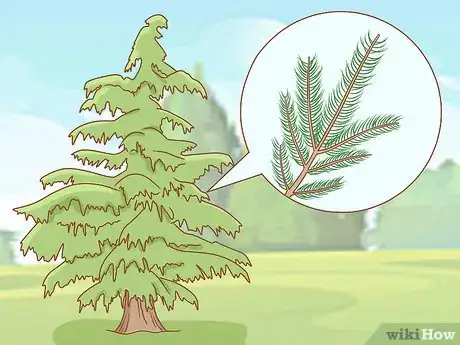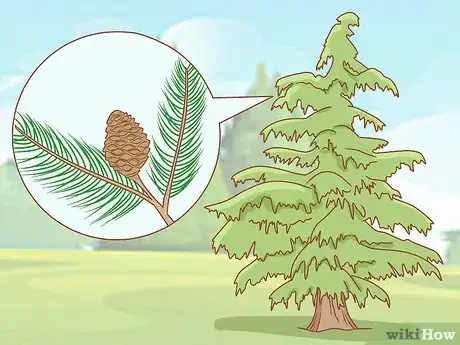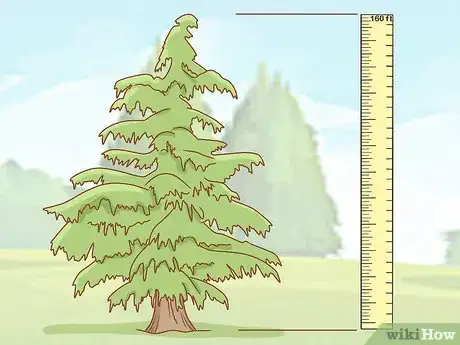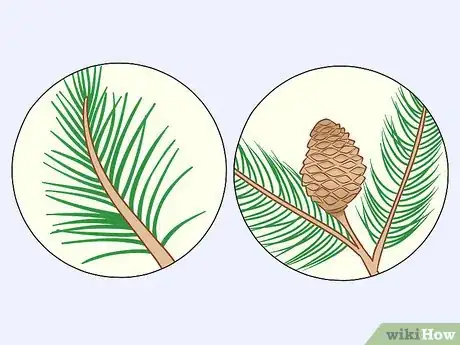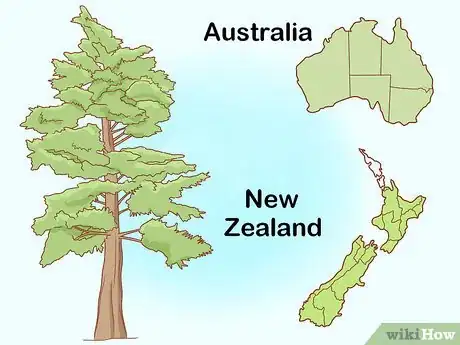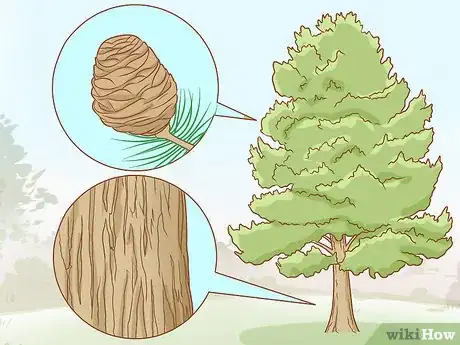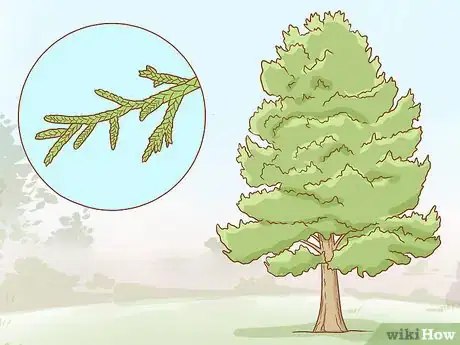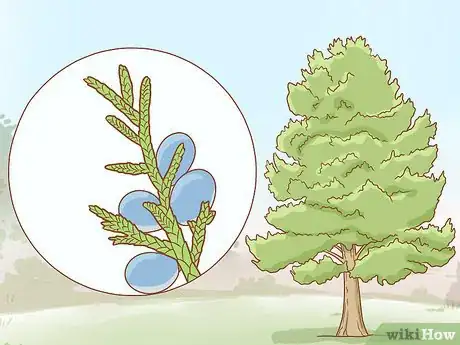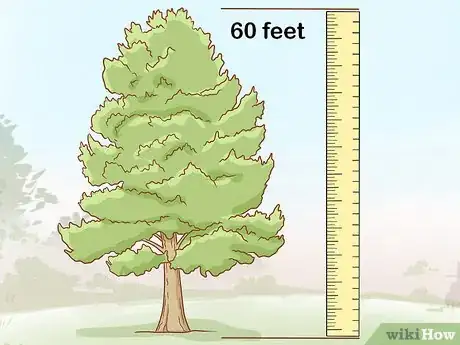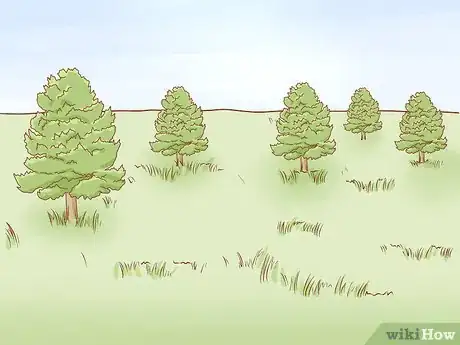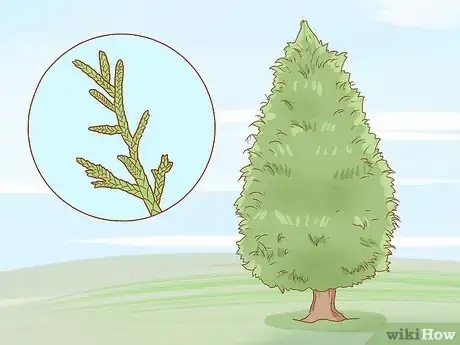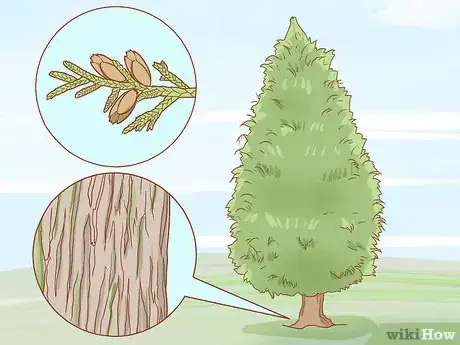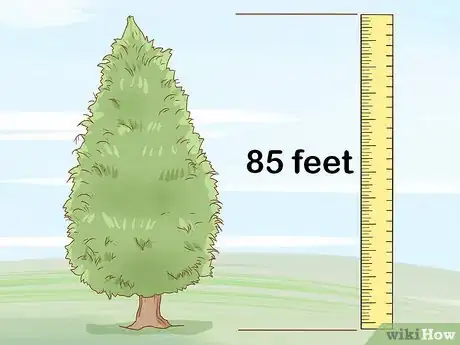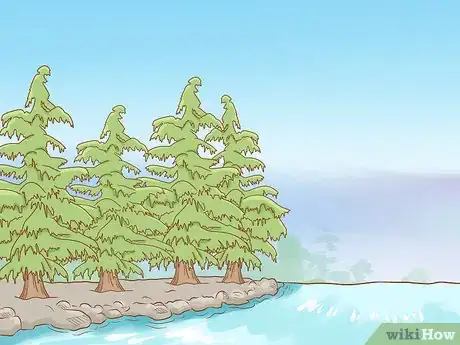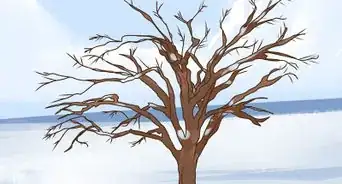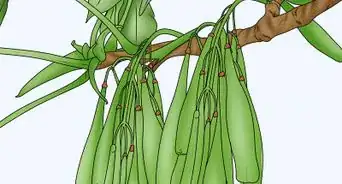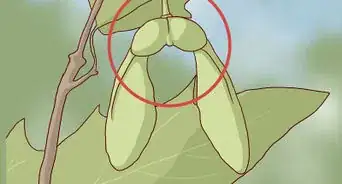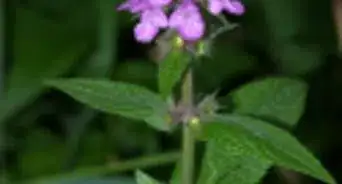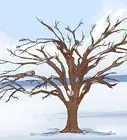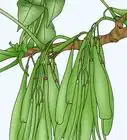This article was co-authored by Michael Simpson, PhD. Dr. Michael Simpson (Mike) is a Registered Professional Biologist in British Columbia, Canada. He has over 20 years of experience in ecology research and professional practice in Britain and North America, with an emphasis on plants and biological diversity. Mike also specializes in science communication and providing education and technical support for ecology projects. Mike received a BSc with honors in Ecology and an MA in Society, Science, and Nature from The University of Lancaster in England as well as a Ph.D. from the University of Alberta. He has worked in British, North American, and South American ecosystems, and with First Nations communities, non-profits, government, academia, and industry.
There are 20 references cited in this article, which can be found at the bottom of the page.
This article has been viewed 76,788 times.
A number of trees are given the common name of "cedar" in the US, despite belonging to other genera, such as the Juniper genus.[1] For instance, you're likely to find the Western Red Cedar, the Eastern Red Cedar, or the Atlantic White Cedar. If you're looking for true cedars in the United States, you're not likely to find them, as they are mainly found in the Mediterranean.
Steps
Noticing True Cedars
-
1Look for true cedars in their native habitat of the Mediterranean. These trees primarily grow in places like Cyprus, the mountains of Northern Africa, Turkey, and Northern Indian. If you find one outside of these areas, it was likely transplanted in.[2]
- You can find these trees around the United States, where people have brought them in and planted them.
-
2Check for dense clusters of blue-green needles. True cedars actually have evergreen needles instead of scale-like leaves that create finger-like extensions.[3] You'll find them in thick groups along the branches, usually coming out of a thick peg-like extension.[4]
- Generally, the needles are 1 to 2 inches (2.5 to 5.1 cm) long.
- You'll also see single needles in places, which indicate the newest growth on the plant.
Advertisement -
3Watch for the larger cones on top of the branches.[5] These trees bear large barrel-like cones. You'll see them sitting atop the branches rather than hanging in clusters below.[6]
- These cones will be covered in thin scales. The scales fall off when the cone matures.
- Cones are usually 2 to 4 inches (5.1 to 10.2 cm) long.
-
4Notice the height of 130 to 160 feet (40 to 49 m). These trees can get relatively tall, and they can have a leaf span of 50 feet (15 m) or more. They can also measure as much as 3 feet (0.91 m) in diameter.[7]
Picking out Western Red Cedars
-
1
-
2Look for leaves in opposite pairs. Leaves on Western Red Cedars grow in pairs at a 90-degree angle. That means that when you're looking at the leaves, they will make a v-shape along the branch, with the "V"s pointing inwards.[10]
- Because the leaves form opposite pairs, it creates a flat structure, almost like a lattice.
- The leaves are small and scale-like, and they often have 3 points on the end. They form long finger-like extensions that make the "V"s.
- Crush a leaf in your hand, and it will create a strong smell. The scent is a little bit like pineapple.
-
3Watch for trees over 100 feet (30 m). Western Red Cedars are very tall, and they can grow above 200 feet (61 m). Typically, if the cedar is above 100 feet (30 m), it's a Western Red Cedar.[11]
- To help you estimate the height, think about your own height. How many of you would it take to reach the top? That can give you some idea of the tree's height.[12]
-
4Check for Western Red Cedars in the Pacific Northwest. The trees' native habitat is in the western part of the United States, particularly the northwest. They prefer to be closer to sea level rather than up in the mountains, though you will find them at almost any elevation.[13]
- While the tree is native to the Pacific Northwest, people have taken it to other temperate climates, so you'll find it places like New Zealand, Australia, and Western Europe.
Finding Eastern Red Cedars
-
1Look for peeling silvery brown bark and small reddish cones. Typically, the main part of the bark will be white or silvery with vertical stripes of light brown. You'll see little bits of it splintering off in small strips. The cones are about 0.5 to 1 inch (1.3 to 2.5 cm) in diameter.[14]
- The cones are only found on male trees.
- You might also see hints of red.[15]
- If you dig down a little bit into the bark, you'll get the "cedar" wood smell.
-
2Check for scale-like leaves that form finger-like extensions on 4 sides. Eastern Red Cedar leaves are similar to Western Red Cedar in that they are scale-like and form "fingers." However, they go all around the stem, rather than just forming opposite pairs.
- Leaves can be yellow-green or dark green.
-
3
-
4Check for a height of 40 to 60 feet (12 to 18 m). These trees don't get nearly as tall as a the Western Red Cedar. They top out at about 60 feet (18 m) with a trunk that's about 1 to 3 feet (0.30 to 0.91 m) in diameter.[18]
- As a guide, 60 feet (18 m) is about the length of a bowling lane.[19]
- When these trees are younger, they typically look more like shrubs.
-
5Look for this tree in a variety of habitats. This tree is very adaptable, so you will find it in forests, prairies, and pastures, just to name a few.[20] In fact, it does well in areas that other trees have trouble in.[21]
- Also, it's often one of the first trees to return to an area that's suffered damage, such as wildfire.
Looking for the Atlantic White Cedar
-
1
-
2Check for reddish bark that splinters off and very small cones. The bark on this tree is similar to the Eastern Red Cedar in that it has a reddish hue. It also peels off in small strips that look somewhat like large splinters.[24]
- The cones on this tree don't get above 0.25 inches (0.64 cm) in diameter. They have a blue/purple hue and are smooth before maturity. The cones mature in the fall, and turn a reddish brown with small scales.
-
3
-
4Watch for Atlantic White Cedar in lower elevations near the coast. These trees prefer to be below the elevation of 200 feet (61 m). You can find them in wet or lowland areas.[27]
- Because these trees have a very limited habitat range, you're less likely to run across one.
Expert Q&A
-
QuestionWhat kind of leaves does a cedar tree have?
 Michael Simpson, PhDDr. Michael Simpson (Mike) is a Registered Professional Biologist in British Columbia, Canada. He has over 20 years of experience in ecology research and professional practice in Britain and North America, with an emphasis on plants and biological diversity. Mike also specializes in science communication and providing education and technical support for ecology projects. Mike received a BSc with honors in Ecology and an MA in Society, Science, and Nature from The University of Lancaster in England as well as a Ph.D. from the University of Alberta. He has worked in British, North American, and South American ecosystems, and with First Nations communities, non-profits, government, academia, and industry.
Michael Simpson, PhDDr. Michael Simpson (Mike) is a Registered Professional Biologist in British Columbia, Canada. He has over 20 years of experience in ecology research and professional practice in Britain and North America, with an emphasis on plants and biological diversity. Mike also specializes in science communication and providing education and technical support for ecology projects. Mike received a BSc with honors in Ecology and an MA in Society, Science, and Nature from The University of Lancaster in England as well as a Ph.D. from the University of Alberta. He has worked in British, North American, and South American ecosystems, and with First Nations communities, non-profits, government, academia, and industry.
Registered Professional Biologist Yellow, red and western red cedar leaves are flat and fern-like in arrangement, leathery in texture and crumble easily if you rub them between your fingers. These trees also have distinctive cones that are small and grow in clusters.
Yellow, red and western red cedar leaves are flat and fern-like in arrangement, leathery in texture and crumble easily if you rub them between your fingers. These trees also have distinctive cones that are small and grow in clusters. -
QuestionHow can you tell cedar from pine?
 Michael Simpson, PhDDr. Michael Simpson (Mike) is a Registered Professional Biologist in British Columbia, Canada. He has over 20 years of experience in ecology research and professional practice in Britain and North America, with an emphasis on plants and biological diversity. Mike also specializes in science communication and providing education and technical support for ecology projects. Mike received a BSc with honors in Ecology and an MA in Society, Science, and Nature from The University of Lancaster in England as well as a Ph.D. from the University of Alberta. He has worked in British, North American, and South American ecosystems, and with First Nations communities, non-profits, government, academia, and industry.
Michael Simpson, PhDDr. Michael Simpson (Mike) is a Registered Professional Biologist in British Columbia, Canada. He has over 20 years of experience in ecology research and professional practice in Britain and North America, with an emphasis on plants and biological diversity. Mike also specializes in science communication and providing education and technical support for ecology projects. Mike received a BSc with honors in Ecology and an MA in Society, Science, and Nature from The University of Lancaster in England as well as a Ph.D. from the University of Alberta. He has worked in British, North American, and South American ecosystems, and with First Nations communities, non-profits, government, academia, and industry.
Registered Professional Biologist You can tell if you are looking at a yellow cedar (Callitropsis nootkatensis), red cedar (Juniperus virginiana), or western red cedar (Thuja plicata) and not at a pine tree because these species don’t have needles like pine or spruce trees.
You can tell if you are looking at a yellow cedar (Callitropsis nootkatensis), red cedar (Juniperus virginiana), or western red cedar (Thuja plicata) and not at a pine tree because these species don’t have needles like pine or spruce trees. -
QuestionHow many varieties of cedar trees are there?
 Michael Simpson, PhDDr. Michael Simpson (Mike) is a Registered Professional Biologist in British Columbia, Canada. He has over 20 years of experience in ecology research and professional practice in Britain and North America, with an emphasis on plants and biological diversity. Mike also specializes in science communication and providing education and technical support for ecology projects. Mike received a BSc with honors in Ecology and an MA in Society, Science, and Nature from The University of Lancaster in England as well as a Ph.D. from the University of Alberta. He has worked in British, North American, and South American ecosystems, and with First Nations communities, non-profits, government, academia, and industry.
Michael Simpson, PhDDr. Michael Simpson (Mike) is a Registered Professional Biologist in British Columbia, Canada. He has over 20 years of experience in ecology research and professional practice in Britain and North America, with an emphasis on plants and biological diversity. Mike also specializes in science communication and providing education and technical support for ecology projects. Mike received a BSc with honors in Ecology and an MA in Society, Science, and Nature from The University of Lancaster in England as well as a Ph.D. from the University of Alberta. He has worked in British, North American, and South American ecosystems, and with First Nations communities, non-profits, government, academia, and industry.
Registered Professional Biologist There are only four recognised species of true cedar, all in the genus Cedrus. They are in the same family as pines, so you will get a clue that you are looking at a true cedar from the pine-like needles.
There are only four recognised species of true cedar, all in the genus Cedrus. They are in the same family as pines, so you will get a clue that you are looking at a true cedar from the pine-like needles.
References
- ↑ https://sciencetrends.com/identify-cedar-tree-types-eastern-red-vs-western-red/
- ↑ https://sciencing.com/juniper-trees-called-cedar-trees-6638095.html
- ↑ Michael Simpson, PhD. Registered Professional Biologist. Expert Interview. 8 September 2021.
- ↑ https://oregonstate.edu/trees/conifer_genera/true_cedar.html
- ↑ Michael Simpson, PhD. Registered Professional Biologist. Expert Interview. 8 September 2021.
- ↑ https://oregonstate.edu/trees/conifer_genera/true_cedar.html
- ↑ http://www.livius.org/articles/misc/cedar/
- ↑ Michael Simpson, PhD. Registered Professional Biologist. Expert Interview. 8 September 2021.
- ↑ https://sciencetrends.com/identify-cedar-tree-types-eastern-red-vs-western-red/
- ↑ https://sciencetrends.com/identify-cedar-tree-types-eastern-red-vs-western-red/
- ↑ https://sciencetrends.com/identify-cedar-tree-types-eastern-red-vs-western-red/
- ↑ https://sciencing.com/cedar-tree-identification-5378794.html
- ↑ https://sciencetrends.com/identify-cedar-tree-types-eastern-red-vs-western-red/
- ↑ https://www.extension.iastate.edu/forestry/iowa_trees/trees/eastern_redcedar.html
- ↑ http://www.maine.gov/dacf/mfs/publications/handbooks_guides/forest_trees/pdf/eastern_redcedar.pdf
- ↑ http://www.maine.gov/dacf/mfs/publications/handbooks_guides/forest_trees/pdf/eastern_redcedar.pdf
- ↑ https://www.slowfoodusa.org/ark-item/eastern-red-cedar-berries
- ↑ https://sciencetrends.com/identify-cedar-tree-types-eastern-red-vs-western-red/
- ↑ http://www.bluebulbprojects.com/measureofthings/results.php?comp=length&unit=ft&amt=60&sort=pr&p=1
- ↑ https://sciencetrends.com/identify-cedar-tree-types-eastern-red-vs-western-red/
- ↑ https://www.extension.iastate.edu/forestry/iowa_trees/trees/eastern_redcedar.html
- ↑ http://www.maine.gov/dacf/mfs/publications/handbooks_guides/forest_trees/pdf/atlantic_white_cedar.pdf
- ↑ https://plants.usda.gov/factsheet/pdf/fs_chth2.pdf
- ↑ https://sciencing.com/cedar-tree-identification-5378794.html
- ↑ http://www.maine.gov/dacf/mfs/publications/handbooks_guides/forest_trees/pdf/atlantic_white_cedar.pdf
- ↑ https://sciencing.com/cedar-tree-identification-5378794.html
- ↑ https://plants.usda.gov/factsheet/pdf/fs_chth2.pdf
About This Article
There are several types of cedar trees, but true cedars are usually found in the Mediterranean, like Northern Africa, Turkey, Northern India, and Cyprus. True cedars have evergreen blue-green needles and large cones on top of their branches. They grow to between 130 and 160 feet in height. There are also red cedar trees, which you can find outside of the Mediterranean. For example, western red cedars have a reddish hue to their bark and cones, which gives them their name. They grow from 100 to 200 feet in height and their scaly leaves fan out in 90-degree V-shapes. You generally find western red cedars in the Midwestern United States. Eastern red cedars have silvery brown bark and small reddish cones. These are generally smaller and their leaves protrude from 4 sides of the stem as opposed to 2 with the western reds. The female trees produce small green and blue cones that look like berries. For more tips, including how to identify Atlantic white cedar trees, read on!

